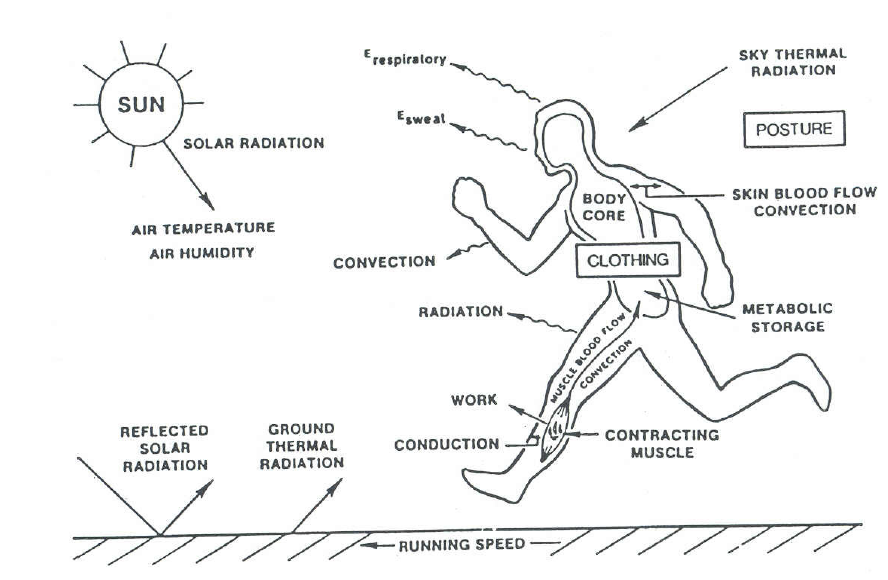Heat stress does not just affect the elderly, very young or ill. Anyone can die or get very ill from over-heating while carrying out heavy physical activity during “normal” hot days in many tropical and sub-tropical countries.
Human beings have a very particular internal core temperature range of around 37 ºC, that keeps the important body functions working properly (Parsons, 2003). If this core body temperature rises then heat strain sets in. A persons potential heat stress risk depends on that persons constitution (e.g. degree of acclimatisation and amount of physical activity they are doing) and on environmental influences such as the temperature and humidity.
Once the core body temperature is over 39 ºC, serious heat stroke may result, with damage to the central nervous system and other organs and death can occur. ….. Prevention??
People with communicable diseases will suffer from excessive heat exposure and extreme weather conditions in a similar manner to those with pre-existing chronic diseases. Their clinical condition may get worse and the health services may face increased demand for emergency treatments.
The recently developed Universal Thermal Climate Index (UTCI; see website www.utci.org) is based on very advanced physiological modeling (Fiala et al., 2011), but it is not designed for population health research or occupational heat stress estimations. For details of the methods of calculating WBGT please refer to the Climate CHIP documentation.

